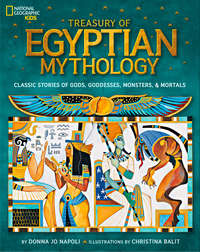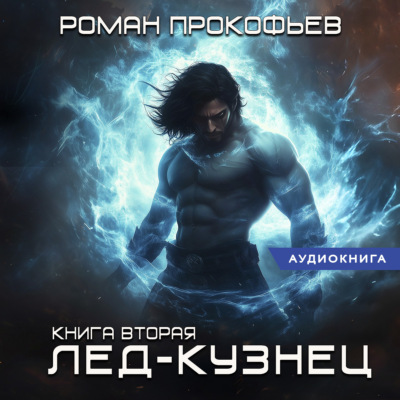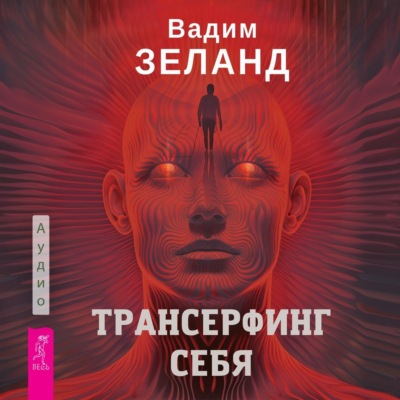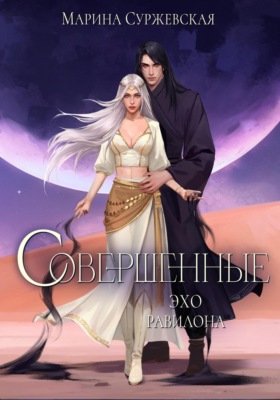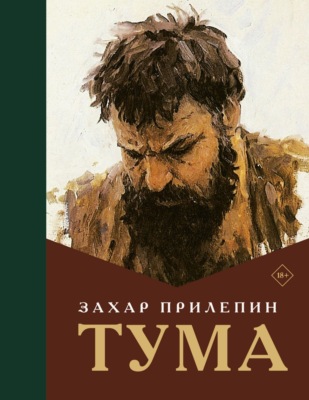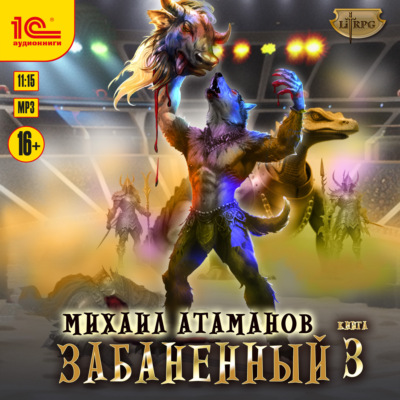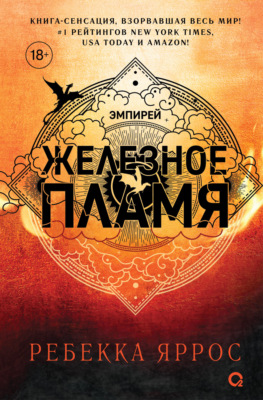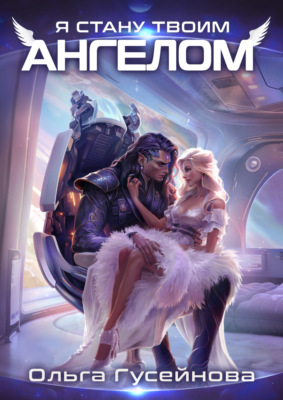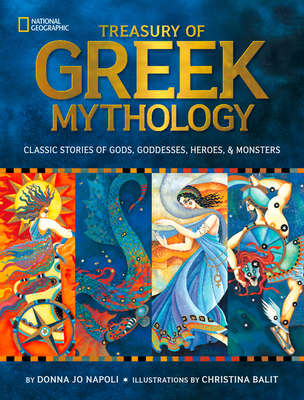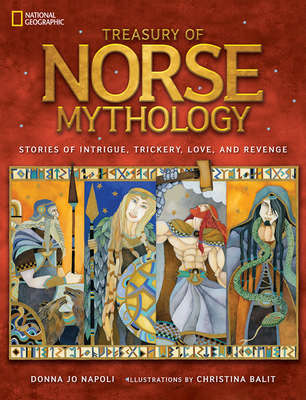Buch lesen: "Treasury of Egyptian Mythology: Classic Stories of Gods, Goddesses, Monsters & Mortals"


Text Copyright © 2013 Donna Jo Napoli
Illustrations Copyright © 2013 Christina Balit
Compilation Copyright © 2013 National Geographic Society
All rights reserved. Reproduction of the whole or any part of the contents without written permission from the publisher is prohibited.
Published by the National Geographic Society
John M. Fahey,
Chairman of the Board and Chief Executive Officer
Declan Moore,
Executive Vice President; President, Publishing and Travel
Melina Gerosa Bellows,
Executive Vice President; Chief Creative Officer, Books, Kids, and Family
Prepared by the Book Division
Hector Sierra,
Senior Vice President and General Manager
Nancy Laties Feresten,
Senior Vice President, Kids Publishing and Media
Jay Sumner,
Director of Photography, Children’s Publishing
Jennifer Emmett,
Vice President, Editorial Director, Children’s Books
Eva Absher-Schantz,
Design Director, Kids Publishing and Media
R. Gary Colbert, Production Director
Jennifer A. Thornton, Director of Managing Editorial
Staff for This Book
Priyanka Lamichhane, Project Editor
David M. Seager, Art Director
Lori Epstein, Senior Photo Editor
Ariane Szu-Tu, Editorial Assistant
Callie Broaddus, Design Production Assistant
Hillary Moloney, Associate Photo Editor
Carl Mehler, Director of Maps
Stuart Armstrong, Map Art
Martin Walz, Map Research and Production
Grace Hill, Associate Managing Editor
Joan Gossett, Production Editor
Lewis R. Bassford, Production Manager
Susan Borke, Legal and Business Affairs
Production Services
Phillip L. Schlosser, Senior Vice President
Chris Brown, Vice President, NG Book Manufacturing
Rachel Faulise, Manager
Darrick McRae, Imaging Technician
Cover: Ra and Usir sit on thrones, fittingly, since Ra rules aboveground and Usir rules below. In front of each stands a challenger. Aset nearly killed Ra with the snakebite. Set did kill Usir.
ILLUSTRATION CREDITS
All artwork by Christina Balit unless otherwise noted below: Willyam Bradberry/Shutterstock; foto76/Shutterstock; Public Domain; Prill/Shutterstock; Shutterstock; Jose Fuste Raga/Corbis; Richard Barnes/National Geographic Stock; Peter Langer/Design Pics/Corbis; Universal Images Group/Getty Images; Frank Lukasseck/Corbis; Sandro Vannini/Corbis; Universal Images Group/Getty Images; Nataliya Hora/Shutterstock; Sandro Vannini/Corbis; mareandmare/Shutterstock; DEA/G. Dagli Orti/DeAgostini/Getty Images; Diana Taliun/Shutterstock; Kenneth Garrett/National Geographic Stock; Kenneth Garrett/National Geographic Stock; Lori Epstein/National Geographic Stock

The National Geographic Society is one of the world’s largest nonprofit scientific and educational organizations. Founded in 1888 to “increase and diffuse geographic knowledge,” the Society’s mission is to inspire people to care about the planet. It reaches more than 400 million people worldwide each month through its official journal, National Geographic, and other magazines; National Geographic Channel; television documentaries; music; radio; films; books; DVDs; maps; exhibitions; live events; school publishing programs; interactive media; and merchandise. National Geographic has funded more than 10,000 scientific research, conservation, and exploration projects and supports an education program promoting geographic literacy.
For more information, please visit www.nationalgeographic.com call 1-800-NGS LINE (647-5463), or write to the following address: National Geographic Society 1145 17th Street N.W. Washington, D.C. 20036-4688 U.S.A.
Visit us online at
For librarians and teachers:
More for kids from National Geographic:
For information about special discounts for bulk purchases, please contact National Geographic Books Special Sales:
For rights or permissions inquiries, please contact
National Geographic Books Subsidiary Rights:
eBook ISBN: 978-1-4263-1861-0
Hardcover ISBN: 978-1-4263-1380-6
Hardcover Library Binding ISBN: 978-1-4263-1381-3
v3.1
Version: 2017-07-06
For the spirit of my maternal grandmother, who was born in Alexandria. —DJN
To my special friend Tessa. —CB

CONTENTS
Cover
Title Page
Copyright
Dedication
Introduction
Preface
RA
(HELIOS)
God of Radiance
THE GREAT PESEDJET
A Hierarchy of Gods
SET
(SETH)
Envious God
ASET
(ISIS)
Devoted Wife and Mother
USIR
(OSIRIS)
God of the Afterlife
NEBET HUT
(NEPHTHYS)
Goddess of Service
HERU SA ASET
(HORUS THE YOUNGER)
Young Warrior God and King
INPU
(ANUBIS)
God of Mummification
TEFNUT
(TPHENIS)
Goddess of Moisture
THE GREAT NILE
The Source of So Much
TEHUTI
(THOTH)
God of Knowledge
HERU WER
(HORUS THE ELDER)
Winged Sun Disk and Protector of Egypt
HUT HERU
(HATHOR)
Goddess of Delights
SEKHMET
(SACHMIS)
Goddess of Vengeance
NIT
(NEITH)
Warrior Goddess and Weaver of the Cosmos
KHNUM
(CHNOUMIS)
God of the Potter’s Wheel
SOBEK
(SOUCHOS)
Crocodile God
BASTET
(BAST)
Cat Goddess
FUNERAL RITES
The Importance of Preparation and Judgment
IMHOTEP
(IMUTHES)
God of Medicine and Architecture
Map of Ancient Egypt
Time Line of Ancient Egypt
Cast of Characters
Postscript
Bibliography
Find Out More
Index
About the Authors

INTRODUCTION
All people count on the sun. It gives them light and warmth. And they count on fresh water, too. Animals and plants need rain, even those that live in the sea, for the sea would grow too salty without it. In modern times, farmers still are concerned with sun and fresh water, because they rely on both to make plants grow, but city people might not think about it much. Our light can be turned on with a wall switch. Our water comes to us through pipes. But in ancient times, sun and fresh water were everyone’s concern.
Humans wandered through the Nile valley thousands and thousands of years ago. But around the year 7000 B.C., humans settled there for good. They lived in small, scattered tribes. They foraged and hunted for food, and they raised domesticated animals, such as cows and sheep. In those days Egypt had plenty of grassy land for animals to feed on, especially to the west of the Nile valley, and it also had a mild, wet climate.
But then the climate grew drier. The grasslands known as savannas shrank. Deserts formed. Wild animals had to move close to the Nile shores for water. People followed the animals. Soon towns appeared up and down the riverbanks. And by around 4000 B.C. people turned to farming to produce food. Perhaps there weren’t enough plants for foraging anymore. Or perhaps they learned farming from foreigners. Either way, farming meant they could feed lots of people. So towns grew large and stable.
Egyptian farmers relied on three seasons. One season was the flood, when the Nile would overflow its banks. As the floods withdrew, they left behind a muddy substance called silt. Silt is rich in minerals, and it made the soil fertile. Next came the planting and growing season. Finally came the hot and dry harvest season, the time when farmers gathered their crops.
Ancient Egyptian mythology put the sun god Ra in charge of these seasons. After all, his movement across the sky made day and his movement across the underworld made night. Because of his light, crops grew. The very pattern of Egyptian life depended upon Ra.
Egyptian mythology reflects this. Ra is one of the earliest gods, and he remains an important god throughout the long history of ancient Egypt. Most other deities begin somehow from Ra. His tongue, his eye, his saliva, his breath even—they all can step forward as independent gods and goddesses. His thoughts and words create objects and living beings. From his tears came the first humans. Perhaps the Egyptians, then, really believed in only one god—the sun god—who could take many forms.
A note to ebook readers: We hope you find the art in this book as enchanting as we do. To experience it in more detail, you may be able to enlarge it. In most reading systems, you can double tap on the image to bring up a full-screen viewer with zoom and pan functionality.

PREFACE
It’s hard to know what ancient Egyptians called their gods because they wrote names differently at different times and left out important information. For example, in the earliest hieroglyphs the god Tehuti’s name was:

The first symbol, the ibis, is Tehuti’s sacred bird. The second is a symbol for the first sound of “top”: This shows us that his name started with a t. Under that is a symbol for the first sound of “yet.” The last is a symbol showing this is a god’s name.
By the time of the Old Kingdom (2575–2125 B.C.), the ibis was often replaced by three symbols:

The “snake” stands for the first sound of “June.” The “twisted flax” stands for a harsh h sound like the one we make when we exhale on glasses before cleaning them, and the “quail chick” stands for the sound(s) following l in “glue.”
By the Middle Kingdom (2010–1630 B.C.), the first symbol was often replaced with  , representing the first sound of “dog.” And in the late period (664–332 B.C.) the first symbol was often
, representing the first sound of “dog.” And in the late period (664–332 B.C.) the first symbol was often  , perhaps representing the first and maybe second sounds of “tell.”
, perhaps representing the first and maybe second sounds of “tell.”
So the initial sound of Tehuti’s name changed three times. And linguists argue over what the rest of the sounds in his name were.
When the Greeks invaded, they recorded myths using their alphabet. But Egyptian and Greek did not have exactly the same sounds, so transcribing from one alphabet to the other was only approximate. In addition, Greek spellings were based on more modern pronunciations than those of early Egypt.
For the names in this book, I chose to use the older Egyptian names, not filtered through Greek: hence Tehuti. Nevertheless, I call the country “Egypt” instead of the hardly known ancient name Kemet. And since the Greek names are more familiar, I provide a reference chart below and list the gods’ and goddesses’ names both ways in the Table of Contents and on the opening pages of each chapter.
| Egyptian Name | Greek Name |
| Ra | Helios |
| Set | Seth |
| Aset | Isis |
| Usir | Osiris |
| Nebet Hut | Nephthys |
| Heru Sa Aset | Horus the Younger |
| Inpu | Anubis |
| Tefnut | Tphenis |
| Tehuti | Thoth |
| Heru Wer | Horus the Elder |
| Hut Heru | Hathor |
| Sekhmet | Sachmis |
| Nit | Neith |
| Khnum | Chnoumis |
| Sobek | Souchos |
| Bastet | Bast |
| Imhotep | Imuthes |

Ra: Ra’s first eye felt betrayed when Ra took a second. But Ra, ever resourceful, turned that old eye into a cobra and put her on the front of his crown, where she felt important again.


RA (HELIOS)
God of Radiance
In the beginning, before there was time, water spread in every direction, though there was no direction really because there was no up, no down; no east, no west; no inside, no outside. This water lay cold and colorless. A wet nothingness that hummed nnnnnnnun. Nun, Nun. This was the cosmos, hardly more than empty chaos. There was but a single entity, so there was no question of order: The cosmos was ordered perforce. The order of a dot, a circle, a sphere, without beginning or end. Utter consistency. Perfect order.
But something there is that doesn’t like order. Order can be tolerated temporarily, but on and on like that? Infinite order? How unutterably intolerable. Boring, really.
A hint came. A slight poke. Then another, a little firmer. A full-fledged beat now. More of them. Insistent beats, breaking up the hum, moving the water imperceptibly at first, then in tiny waves, then bigger ones, huge ones now, tsunamis, yet still in a pattern, still ordered, one after another at regular intervals. Thump thump thump thump.
A heart formed around this pulse, for every rhythm evokes an origin.
And in that heart nestled a thought. After all, some think with the head and others think with the heart. This was definitely a heart thought.
Ah, the first and the profound disorder: thought.
Most life-forms require water. So it makes sense that Egyptian tales of creation involve a huge water mass. What is striking here, though, is the importance of words, reminiscent of the Bible’s Book of John: “In the beginning was the Word.” Today many scientists would argue that humanity really started with the development of language. Perhaps the ancients were focusing not so much on the creation of life as on the creation of humans.

A strong ocean wave at sunset illustrates the majesty and power of water.
This single thought rubbed fast and faster until it warmed and finally ignited into language. The god Ra sprang to life with a word already in his mouth. More bubbled up. Words now crowded his mouth. They trampled his tongue and pushed against his teeth, his lips. He had so many words to enunciate. The need hammered at him. From that very need came lungs and a voice box and muscles to make it all move. Ra shouted the first word, over and over, and those shouts rose in molten mass up and up and spewed forth through the waters of Nun in a fiery explosion.
That was the first firmament, the mound of creation that Ra called benben—it all started with a single tip, like a volcano mouth. Ra stood upon it in triumph and knew he must speak more. For in his voice lay all creation. He must create, he must never stop creating.
Ra spat and the moisture from within him formed the goddess Tefnut, and the breathy force that propelled that moisture formed the god Shu. The products of his new mouth, his new lungs.
So there were three of them now, three deities distinct from the vast wallow of Nun. It felt wonderful to be a triad; it felt sturdy, invincible even. With three backs together, you could face everything at once. With three, you could explore the three dimensions simultaneously. Though there was no music yet, though there were no colors yet, Ra sensed the possibilities of three at some level he was not yet ready to understand.
But even more than the possibilities was the reality. Life mattered. And being a father mattered. Ra rejoiced in his self-creation. He rejoiced in his creation of his daughter and son. This was a good beginning. Ah, what water had yielded. Ah, indeed.
Shu and Tefnut, these royal children, played constantly. They stalked each other and pounced and wrestled. They rolled around and swatted each other. They were like lion cubs, and Ra was like a huge patient lion father, posing contentedly as they chased his tail or combed his mane, though of course there were no lions yet. There were only Shu and Tefnut and Ra, and the vast spreading Nun around the island the triad roamed.

Ra, his spittle-born daughter Tefnut, and his breath-born son Shu, mingle as one and as three at the same time. They form the first of many triads among the Egyptian gods.
One night, instead of sleeping, Shu and Tefnut went off wandering in the dark. Shu was air and Tefnut was moisture and neither of them had special powers to let them see through the blackness. So, as children will, they got lost.
When Ra realized they were absent, he felt bereft. The difference between being alone in the vastness and being with his two children was the difference between sorrow and delight. He was lonely. And, worse, he grew anxious. There could be nothing out there to hurt the children, for, after all, there could be nothing out there period. What existed existed only because Ra had made it. Yet anxiety made this god itch all over until he wanted to scream and scratch his own skin off. He needed those children. He loved them.
At this time Ra had only one eye. He plucked it out from his forehead and sent his eye searching for Shu and Tefnut, for his darlings.
Then he settled down and waited for the eye to return. He waited and waited. While he waited, blind and cold, he curled in on himself and wondered what he would do if his eye didn’t find the children. It might search in vain forever. But the children could come back on their own anyway—that was possible. But that was terrible, too, for their father wouldn’t even be able to see them. Ra rolled in wretchedness.
And so Ra fashioned for himself a new eye, as he waited and waited some more.
Meanwhile the first eye of Ra, the original eye, lit up the world and flew across the firmament. It hugged the sands. It seeped into rock crevices. And now it soared across the waters, rising with each wave, falling as it crested. The old eye checked everywhere, everywhere and at last found the cowering cubs, who had grown all gangly and awkward, almost full size by now, and led them back to their father, dripping and skinny and needy.

Tefnut and her brother Shu coiled up in fear, lost without the warmth and light of their father Ra. This is how Ra’s original eye found them—shivering.

Ra’s tears of relief and love fell freely, bursting as they hit the earth and, thus, releasing human beings into the world. And a whole lot of trouble.
Ra gathered his children to his chest and felt whole again. These children were his very limbs, they were his own breath, his own fluids, they were everything. He broke himself on the joy of being reunited and he wept on his parts. With great huge sobs, he exhausted himself. And strange creatures—human beings—stepped delicately out of each teardrop, resplendent in their wet newness, gaping at the awe-inspiring wonder of creation. Innocent, yes. Yet with hungry hearts that made Ra’s new eye blink, for he sensed those hungry human hearts would allow innocence to be consumed and vanish.
But the old eye of Ra, the original eye, was glad to see that humans were corruptible. That eye wanted Ra’s creations to make trouble for him, for Ra had been disloyal—Ra had replaced the old eye with the new eye. The old eye smoldered in fury.
Ra was stupefied at the old eye’s reaction. He understood nothing of jealousy, nothing of loyalty. Those emotions came from interacting, and he had never had to interact with anyone but Tefnut and Shu. Still, as his old eye hissed and spluttered, he understood the need for appeasement. And so he transformed his old eye into a snake, the very first snake ever, a cobra. And he picked it up and put it on the front of his forehead—the place of highest honor—and he called it his iaret. It worked! The iaret was proud to precede Ra wherever he went.
Everything was getting better and better.
But now something else was happening. Snakes slithered across Ra’s feet. They slithered across Shu’s and Tefnut’s feet. Amazing: Creation had led to more creation. Shu and Tefnut considered the snakes and they knew, as though by instinct, that they could create, too. Air and moisture can dance together, after all. A mist, Shu and Tefnut tangoed over the unending sea, they dipped and twirled in graceful embrace, and Shu breathed into Tefnut until they gave birth to Geb and Nut.
The new generation lay there, tangled in a heated hug, so much so that they risked merging entirely.
Ra and his daughter Tefnut looked on with puzzled interest, but the god Shu knew better. Nothing could happen right if Geb and Nut didn’t separate. Shu sensed that life wanted to crawl forth on the back of Geb and for that to happen, light needed to dance between Geb and Nut. So Shu did what a father had to do; he tore Geb and Nut asunder. He raised Nut up in his long strong arms to make an arch of sky, leaving Geb prostrate, the waiting earth, ready for whatever gifts might come from above and below.
But Ra didn’t wait for anything; it wasn’t in his nature. He looked at the bow Nut’s body formed and all those words that filled his heart now spilled out of his mouth in a new form: stories. Ra became brilliant like Nut, brilliant with stories. He had to tell those stories, those stories could make anything happen, anytime, anywhere.

Shu lifted his daughter Nut; the drape of her body formed the sky. He left his son Geb lying at his feet; the expanse of Geb’s body formed the earth.
Ra snuck behind the mountain Manu (which appeared even as he said the name) and climbed into his boat Manjet (again gaining solidity as it was named, yet somehow being as old as forever, millions upon millions of years old) and sailed across the sky as a glowing ball of fire that appeared to roll over Nut’s thighs and buttocks and spine and neck. He landed in the far west horizon (since the directions now existed as he spoke them) and then journeyed back to Manu, to his starting point, this time traveling through the underworld Duat in his second boat, Mesektet.

Manjet carried Ra across the sky, as he changed from a morning babe to an evening sage. Imagine how strange it must have felt to experience a lifetime each day.
There was something exhilarating and renewing at the start of the journey across the sky and something tiring and withering at the end. A tantalizing mix. Ra had to repeat it; it was far too involving to experience only once. He allowed himself to be born again, coming out through Nut as though she were his mother rather than his granddaughter, reversing the order of things, confusing time by letting it circle back on itself. He rose as a baby. By midday, when the boat Manjet arrived at the first knob of Nut’s spine, he was a man in the prime of life, a hero ready to tackle any problem and win. He set in the evening as an old man, tottering on a short stick, a flame fanning to a flicker of heat and finally a memory of warmth. What a journey. What a thrill. He had to repeat it forever.
And so a new order was formed. The sun god Ra defined the fundamental rhythm of life. But disorder could never disappear now; life entails it. And Ra’s words ensured it.
Pay attention, all.
Behold my majesty.
I am the Lord of Radiance.
I am the father of all, the lover of strength, the giant of victory.
So now, let us conquer.
Conquer? What could that mean? Who was there to conquer? Where was the disorder, the discord, that would require vanquishing? Ra couldn’t see it yet. But he knew beyond a doubt it was coming.
Die kostenlose Leseprobe ist beendet.
